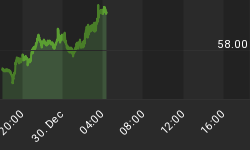Corporate tie-ups are all the rage at the moment. In 2018, global M&A deal value hit a staggering $3.53 trillion as acquisitions increasingly became the preferred growth plan for executives across the diverse sector. Nearly half of consolidations originated in the US despite a sharp drop in M&A interest from China.
Merger activity shows no signs of relenting in the current year, with the recently announced $17.3 billion-deal between health insurer Centene Corp.(NYSE:CNC) and WellCare Health Plans Inc.(NYSE:WCG) hogging the limelight (right after the whopping $71-billion Disney-Fox merger).
The healthcare companies hope to create a "leader" in government-sponsored healthcare—and enhance shareholder value in the process.
Nobody can argue with the fact that creating more efficient businesses improves productivity and is, therefore, good for the economy. But as many employees of merging companies have often discovered, hidden beyond all the glamorous talk of a utopian future are some inimical realities...
Creating synergies by dieting
Whenever two companies discuss the merits of coming together, the phrase ‘cost synergies’ is the boilerplate text in press releases. For instance, in the Centene-WellCare merger, the joint statement reads:
"The combination is expected to generate approximately $500 million of annual net cost synergies by year two, driven primarily by the ability to capitalize on economies of scale in pharmacy and other medical cost management, leveraging WellCare's Medicare capabilities across markets, optimizing capabilities in IT systems and process management, as well as increased efficiencies in G&A. These synergies would be in addition to the previously communicated efforts of Centene Forward."
Related: The Stock Symbol All Weed Companies Want
In this case, cutting “cost synergies” could mean that IT systems, medical cost management, and general administrative expenses are likely to be less than the sum of the two companies’.
Unfortunately, for employees, synergies usually mean that redundancies will be eliminated--usually through layoffs. In fact, it’s almost inevitable that some workers will face the ax as the merged company looks to trim some fat. After all, wages and compensation are the largest line item for most companies, accounting for 70 percent or more of operating expenses.
The number of layoffs can be surprisingly huge, especially if the company has ambitious cost synergy targets. For instance, Business Insider makes a rough estimate that 5,300 of the 60,000-strong combined workforce of SunTrusts Banks and BB&T could lose their jobs when the two companies merge in order to achieve their target synergies of $1.6B. The deal is valued at $66B.
The situation could be even direr when Bristol-Myers Squibb acquires biotech Celegene Inc.
Bristol has targeted cost synergies of $2.5B by 2022 in a massive $74-billion takeover. The two companies have a combined workforce of ~31,000.
The merger between Anheuser-Busch InBev and SABMiller literally created a ghost town in Eden, North Carolina.
Mass layoffs at Toys-R-Us resulted from a leveraged buyout with the best intentions.
Related: Automakers Go All-In On Electric Vehicles
The February job report showed that the economy’s erstwhile steady job-creation machine had begun to sputter. Only 20,000 new jobs were created during the month, the smallest increase in more than a year. Last year, there were 375 M&A deals in the U.S. worth more than a billion dollars--bearing in mind that most layoffs happen at larger companies.
With the economy dramatically slowing down, the ability of businesses to absorb all the people laid off after mergers could be seriously compromised.
Last year, General Motors laid off 15,000 workers--ample proof that jobs can be at serious risk even in an otherwise healthy economy.
In total, 2018 layoffs at large companies were nearly 500,000; some were due to mergers while others were due to poor performance or restructuring drives.
By Alex Kimani for Safehaven.com
More Top Reads From Safehaven.com

















